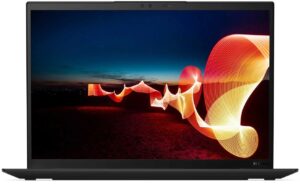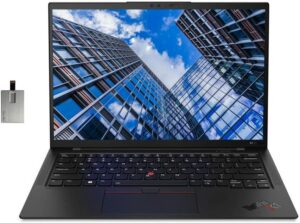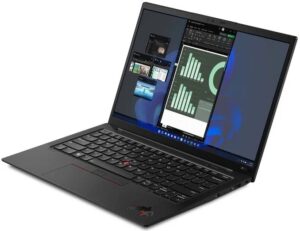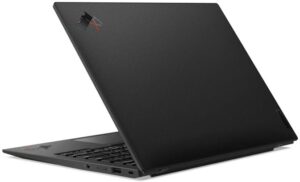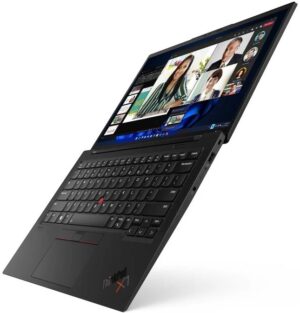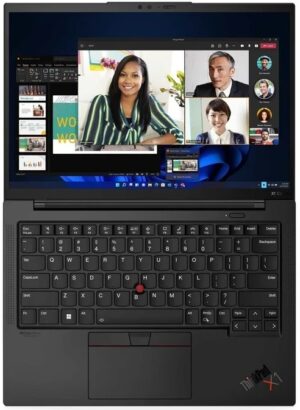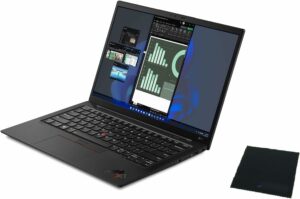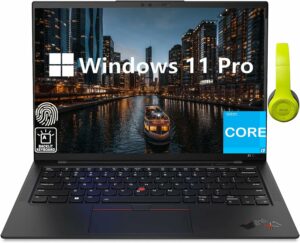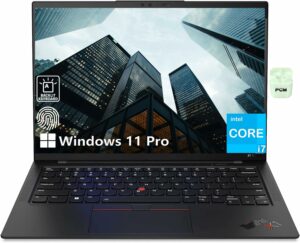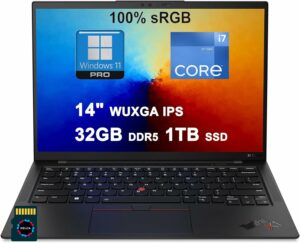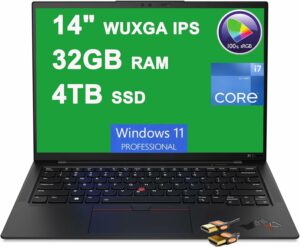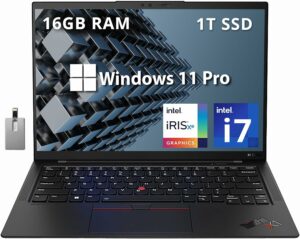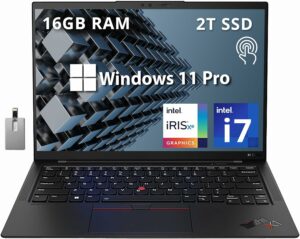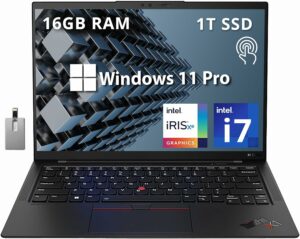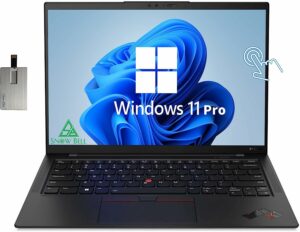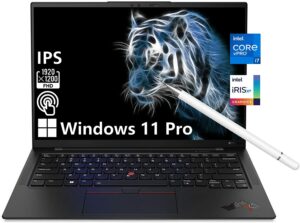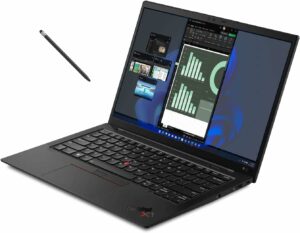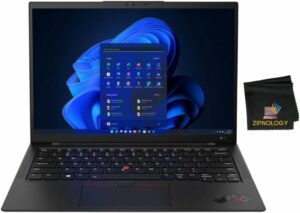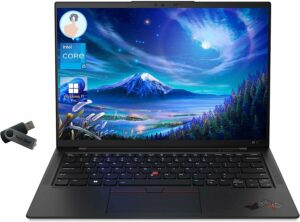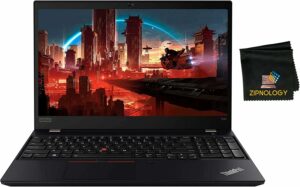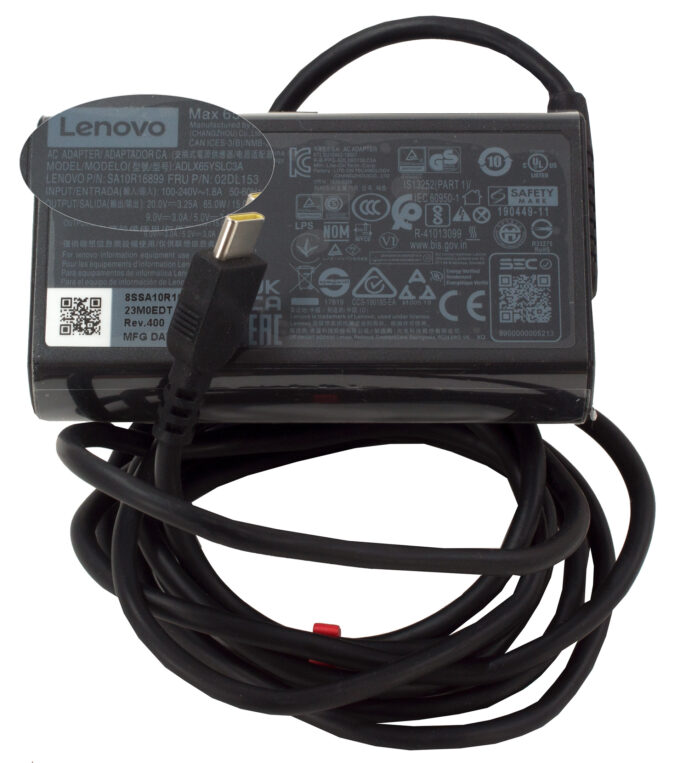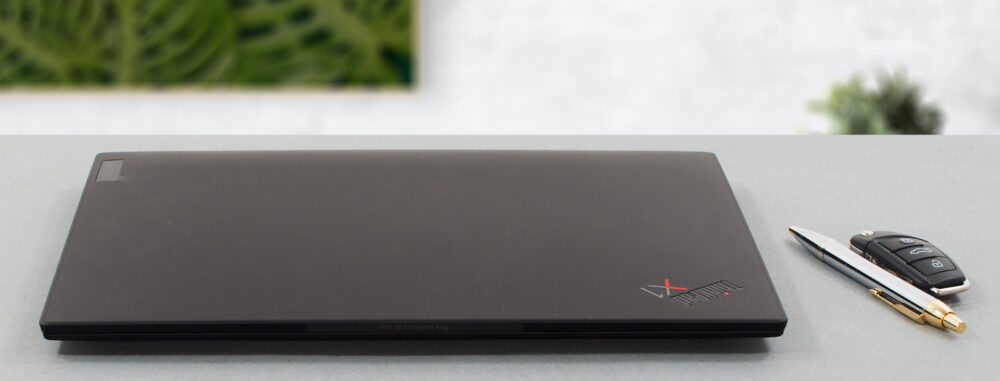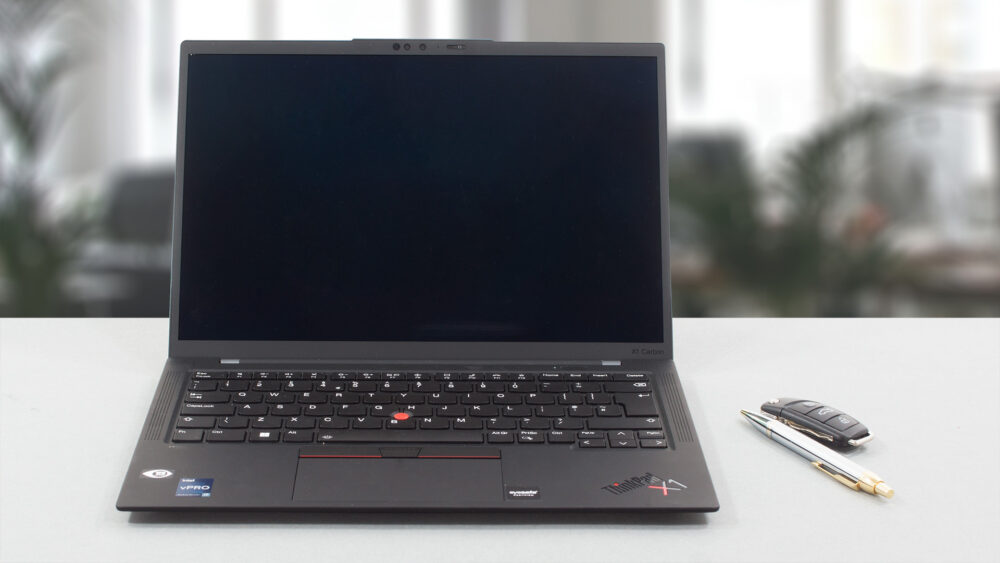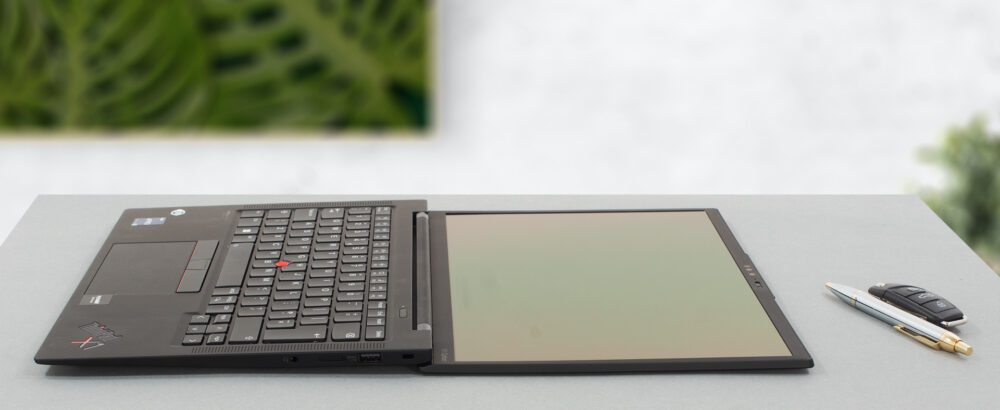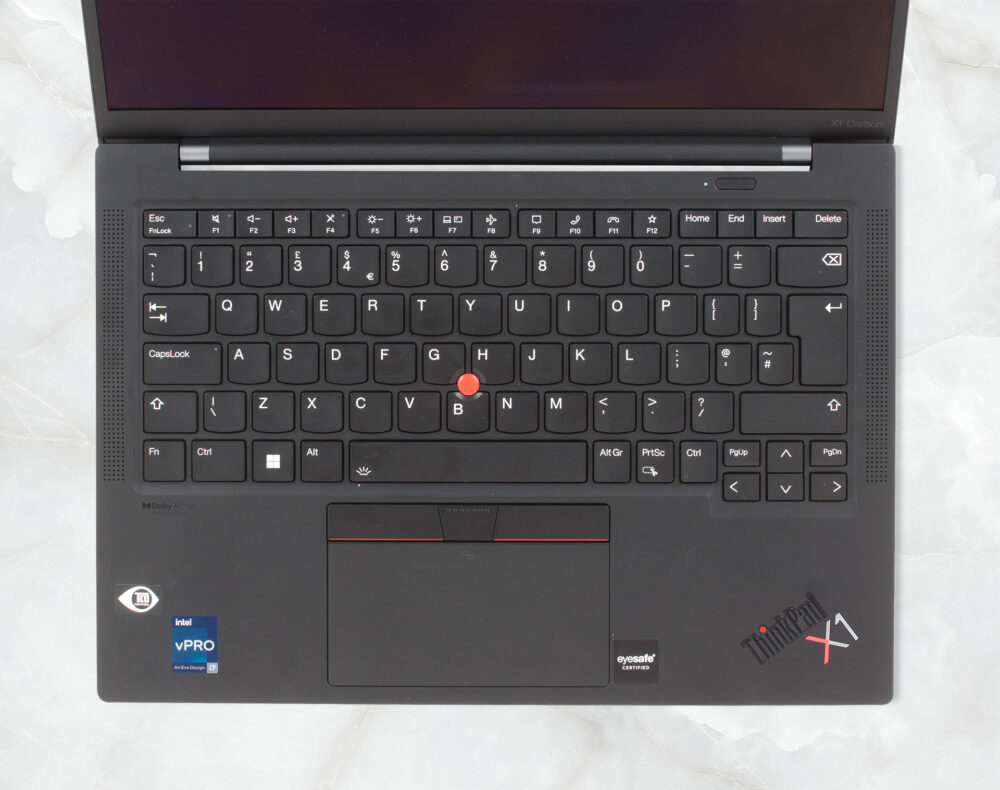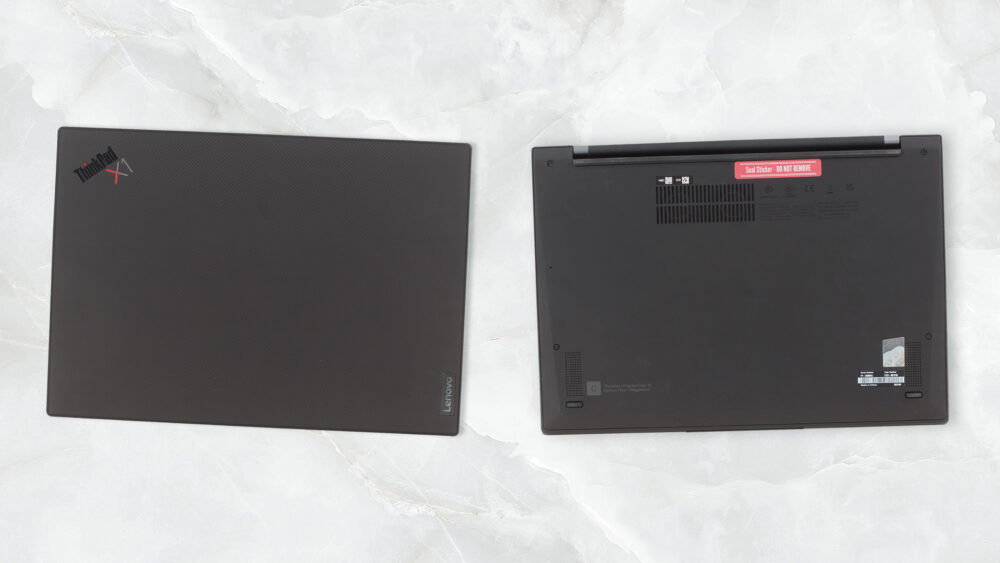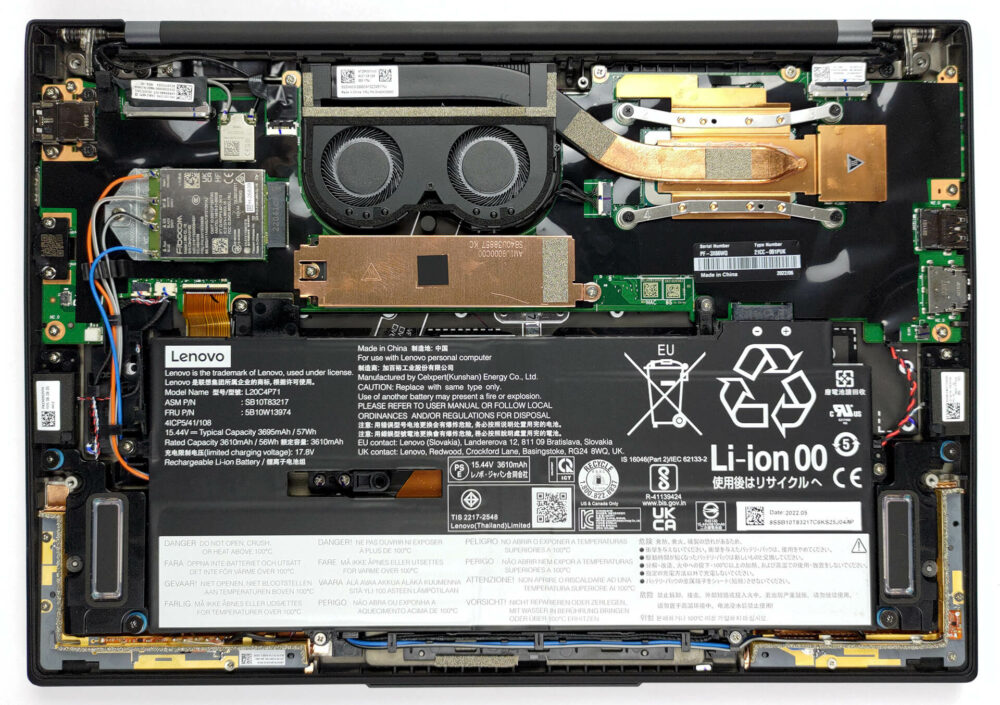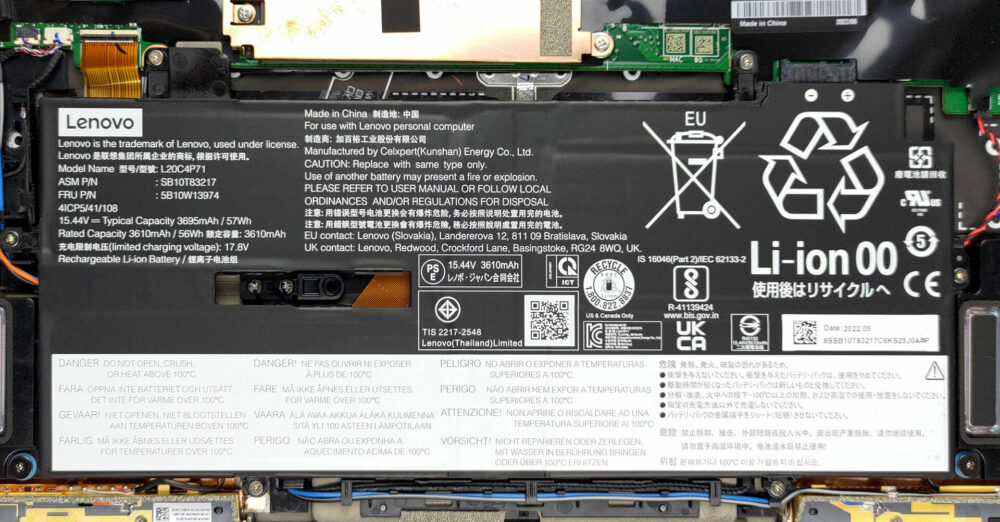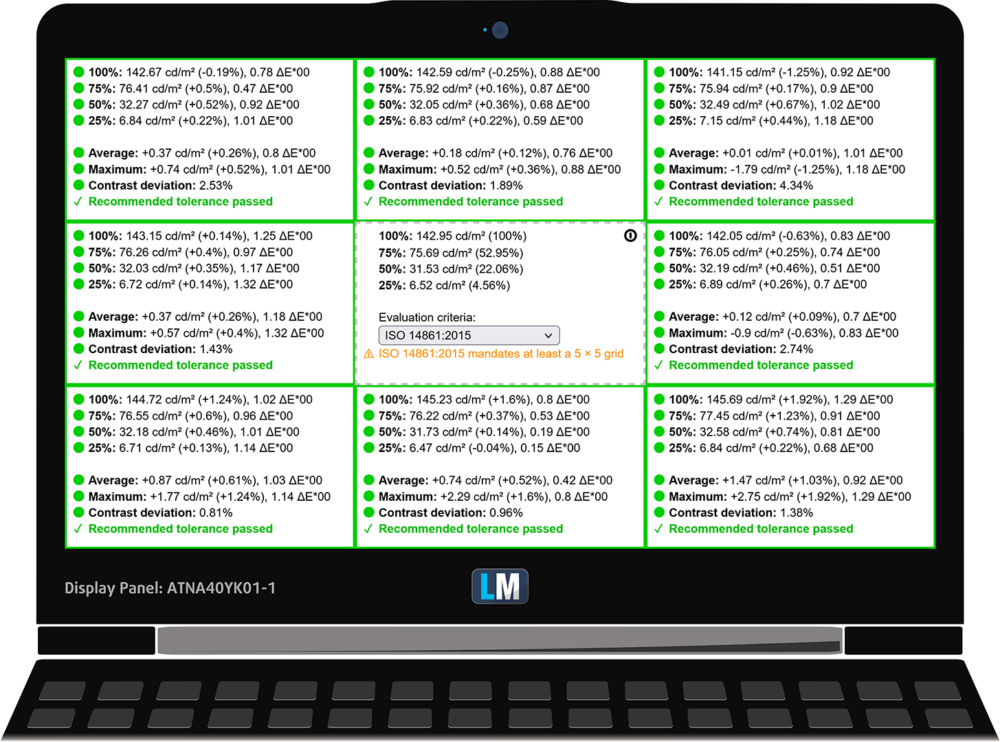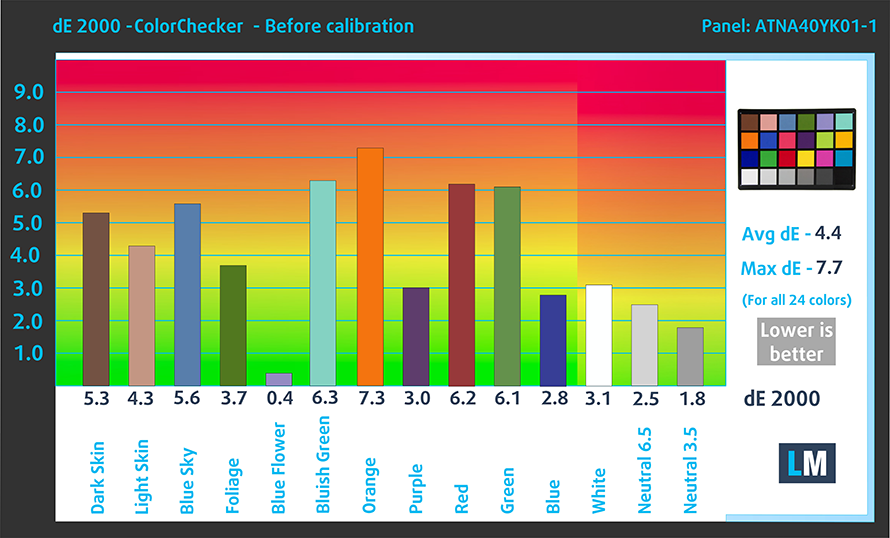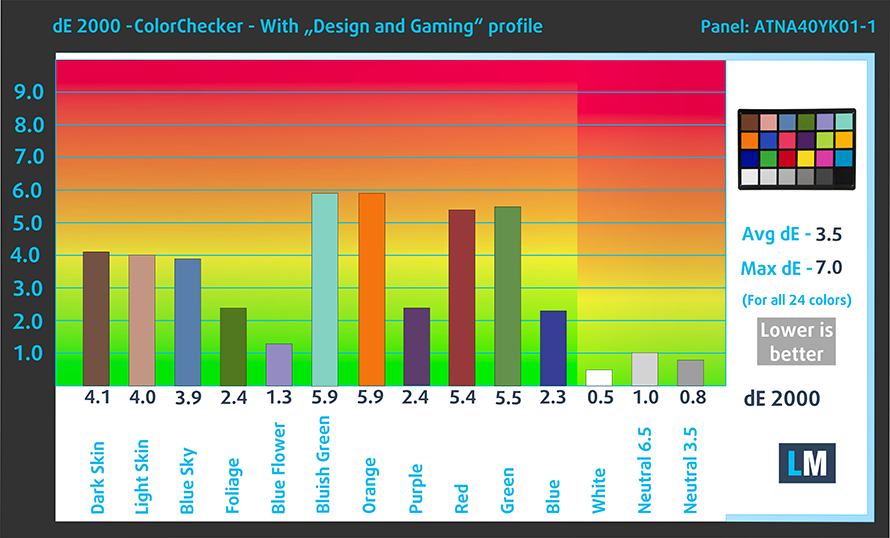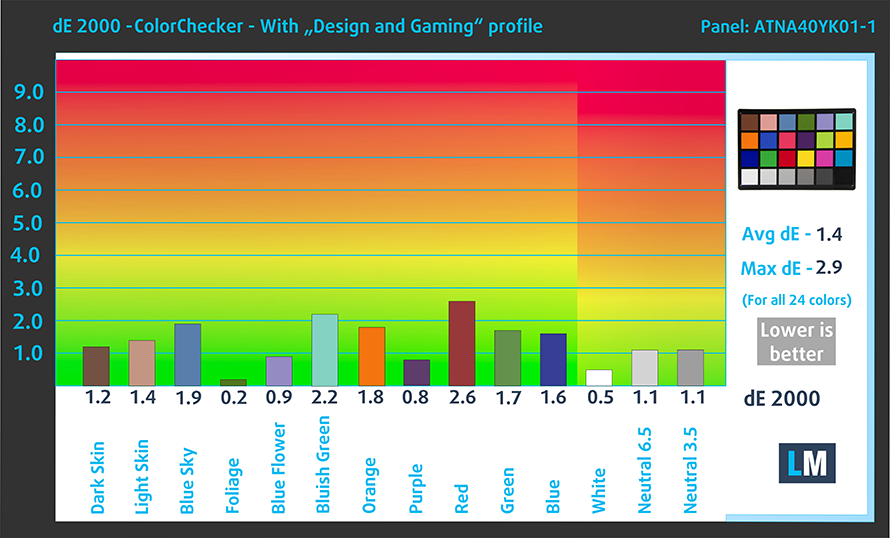Lenovo ThinkPad X1 Carbon (10th Gen) review
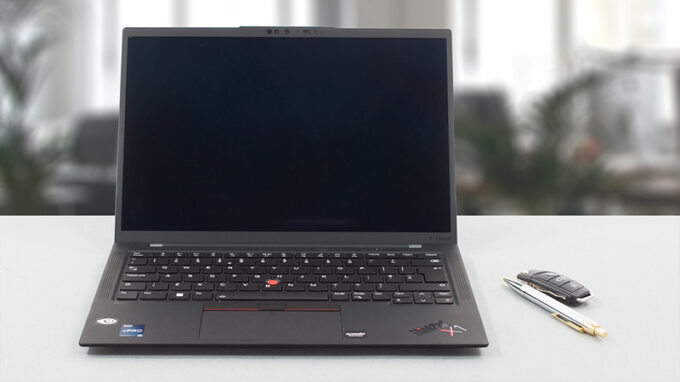 Make way for the 10th generation Lenovo ThinkPad X1 Carbon. It is one of the most established devices in the ThinkPad X1 portfolio. Undoubtedly, it is the one the majority of people associate this brand with. What originally made the brand special was the carbon fiber material, pristine build quality, and its super thin and light form factor.
Make way for the 10th generation Lenovo ThinkPad X1 Carbon. It is one of the most established devices in the ThinkPad X1 portfolio. Undoubtedly, it is the one the majority of people associate this brand with. What originally made the brand special was the carbon fiber material, pristine build quality, and its super thin and light form factor.
In 2022, however, neither of these qualities is a rarity. This means that Lenovo needs to rely on two things to remain competitive. First – the die-hard ThinkPad fans, which know what to expect, and are ready to pay any price for their notebook. And second, it needs to beat the competition. So, who are its competitors?
In our view, the major one is the ASUS ExpertBook B9 (B9400), or its latest upgrade – the B9450. It has only recently established itself as a true contender for the best business laptop crown. To beat it, Lenovo has given the ThinkPad X1 Carbon 10th Gen access to the power of the Core i7-1280P.
Surprisingly, the display options here are quite comprehensive. You can get a 1200p panel, a 1400p one, a 1800p OLED one, or a 2400p IPS one. Thankfully, we were able to get our hands on the OLED panel.
You can check the prices and configurations in our Specs System: https://laptopmedia.com/series/lenovo-thinkpad-x1-carbon-10th-gen-2022/
Contents
Specs Sheet
- HDD/SSD
- up to 4000GB SSD
- M.2 Slot
- 1x 2280 PCIe NVMe 4.0 x4 See photo
- RAM
- up to 32GB
- OS
- Windows 11 Pro, Windows 10 Pro, Windows 11 Home, Windows 10 Home
- Battery
- 57Wh, 57Wh, 3-cell, 57Wh , 57.5Wh, 4-cell
- Body material
- Aluminum, Carbon
- Dimensions
- 315.6 x 222.5 x 14.95 - 15.36 mm (12.43" x 8.76" x 0.59")
- Weight
- 1.12 kg (2.5 lbs)
- Ports and connectivity
- 1x USB Type-A
- 3.2 Gen 1 (5 Gbps)
- 1x USB Type-A
- 3.2 Gen 1 (5 Gbps), Sleep and Charge
- 2x USB Type-C
- 4.0, Thunderbolt 4, Power Delivery (PD), DisplayPort
- HDMI
- 2.0b
- Card reader
- Ethernet LAN
- Wi-Fi
- 802.11ax
- Bluetooth
- 5.2
- Audio jack
- 3.5mm Combo Jack
- Nano SIM card tray with optional 5G connectivity
- Features
- Fingerprint reader
- Web camera
- HD / FHD / IR
- Backlit keyboard
- Microphone
- Quad-Array 360° far-field, Dolby Voice
- Speakers
- 2x 2W woofers + 2x 0.8W tweeters Stereo Speakers, Dolby Atmos
- Optical drive
- Security Lock slot
- Kensington Nano Lock
All Lenovo ThinkPad X1 Carbon (10th Gen, 2022) configurations
What’s in the box?
Inside the package, we found some paperwork, as well as a 65W USB Type-C power adapter.
Design and construction
What a surprise! This laptop is made out of carbon fiber. Well, at least the lid is carbon, while the base is aluminum. This gives the laptop a very strong rigidity while remaining really light. The machine starts at 1.12 kg and has a profile of about 15mm.
When trying to twist the lid, we see the screen inside move from left to right, which is a bit scary to look at. The base, however, is almost still, which is great. Also, we can see the hinge cover, which has a cylindrical shape.
Opening the lid with a single hand is as easy as eating a hamburger from McDonald’s in one bite. The bezels around the glossy display are pretty small with the top one housing an array of sensors. There is an optional 1080p Web camera with a privacy shutter and an IR face recognition sensor. Moreover, Lenovo states that there is another option, which uses Computer Vision. Yikes!
Now, let’s check out the keyboard. There, you will find a fingerprint reader embedded in the power button. The button itself is flush with the surface and is a bit soft on the touch. On the other hand, the keyboard is pretty comfortable with a relatively long key travel and clicky feedback. As always, new users to the ThinkPad brand would need to get used to the swapped “Control” and “Function” keys. Or, they can switch them in the BIOS settings.
As you can tell, TrackPoint is present, you can use it in conjunction with the three buttons above the touchpad. Interestingly, the latter has a glass cover and a size of 56 by 110 mm. This makes it a bit small, and despite the fantastic gliding experience, we found the clicking mechanism a bit uncomfortable. The reason for that is that the top part of the surface doesn’t really register clicks whatsoever.
By the way, there are speakers surrounding the keyboard, with two more finding their way on the bottom panel. There, you will also see a ventilation grill, which supplies cool air to the fans. The hot one is then exhausted through a vent on the back – in between the base and the lid.
Ports
On the left side, there are two Thunderbolt 4 connectors, a USB Type-A 3.2 (Gen. 1) port, and an HDMI 2.0 connector. Then, on the right, there is a Kensington Nano security lock slot, another USB Type-A 3.2 (Gen. 1) port, a SIM card tray, and an Audio jack.
Disassembly, upgrade options and maintenance
You need to undo a total of 5 captive Phillips-head screws to take this laptop’s bottom panel out of your way.
Inside, you will see a 57Wh battery pack. It lasts for nearly 8 hours of Web browsing, or more than 6 hours of video playback. To take it out, you have to undo the 6 Phillips-head screws, which hold the battery in place.
This device can be configured with up to 32GB of soldered LPDDR5 memory, working at 5200 MHz in quad-channel mode. Storage-wise, there is one M.2 PCIe x4 slot, which fits Gen 4 SSDs.
In terms of cooling, there is one heat pipe, a heat sink, two small fans, and a couple of heat spreaders.
Display quality
Lenovo ThinkPad X1 Carbon 10th Gen is equipped with a 60Hz OLED panel, Samsung ATNA40YK01-1. Its diagonal is 14.0-inch (35.5 cm), and the resolution – 2880 x 1800p. Additionally, the screen ratio is 16:10, the pixel density – 243 ppi, and their pitch – 0.1 x 0.1 mm. The screen can be considered Retina when viewed from at least 36 cm (from this distance, the average human eye can’t see the individual pixels).
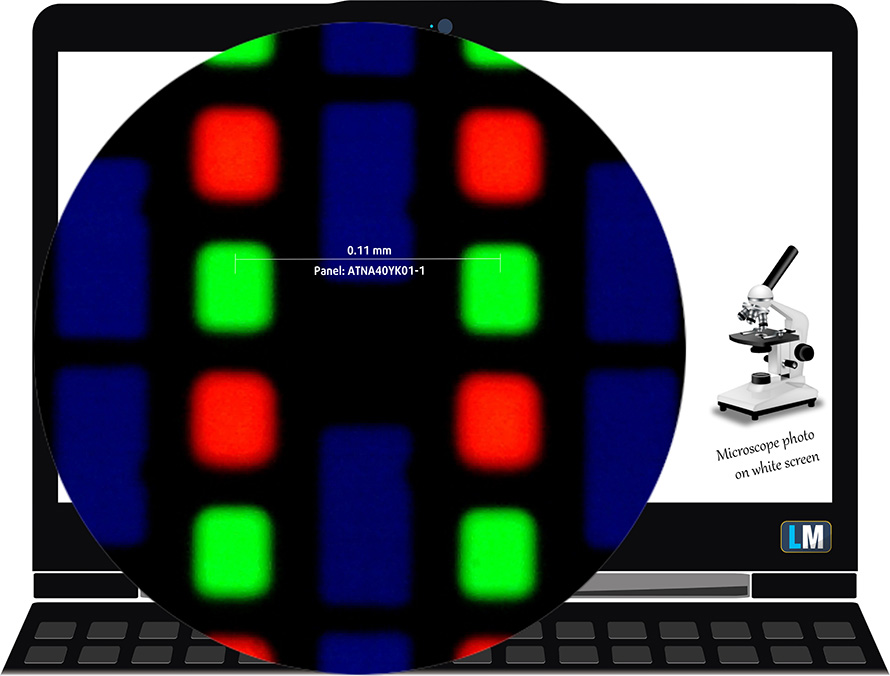
Viewing angles are comfortable. We offer images at different angles to evaluate the quality.

Also, a video with locked focus and exposure.
The maximum measured brightness is 435 nits (cd/m2) (HDR off) in the middle of the screen and 343 nits (cd/m2) as an average with a maximum deviation of only 1%. The Correlated Color Temperature on a white screen and at maximum brightness is 6430K – almost matching the 6500K temperature for sRGB.
In the illustration below you can see how the display performs from a uniformity perspective.
Values of dE2000 over 4.0 should not occur, and this parameter is one of the first you should check if you intend to use the laptop for color-sensitive work (a maximum tolerance of 2.0 ). The contrast ratio here is incomparably better than that of the IPS and TN panels and is mathematically infinite.
To make sure we are on the same page, we would like to give you a little introduction to the sRGB color gamut and the Adobe RGB. To start, there’s the CIE 1976 Uniform Chromaticity Diagram that represents the visible specter of colors by the human eye, giving you a better perception of the color gamut coverage and the color accuracy.
Inside the black triangle, you will see the standard color gamut (sRGB) that is being used by millions of people on HDTV and on the web. As for the Adobe RGB, this is used in professional cameras, monitors, etc for printing. Basically, colors inside the black triangle are used by everyone and this is the essential part of the color quality and color accuracy of a mainstream notebook.
Still, we’ve included other color spaces like the famous DCI-P3 standard used by movie studios, as well as the digital UHD Rec.2020 standard. Rec.2020, however, is still a thing of the future and it’s difficult for today’s displays to cover that well. We’ve also included the so-called Michael Pointer gamut, or Pointer’s gamut, which represents the colors that naturally occur around us every day.
The yellow dotted line shows Lenovo ThinkPad X1 Carbon 10th Gen’s color gamut coverage.
Its display covers 100% of the sRGB/ITU-R BT.709 (web/HDTV standard) in CIE1976 and 100% of DCI-P3 providing a punchy and vibrant image (HDR off).
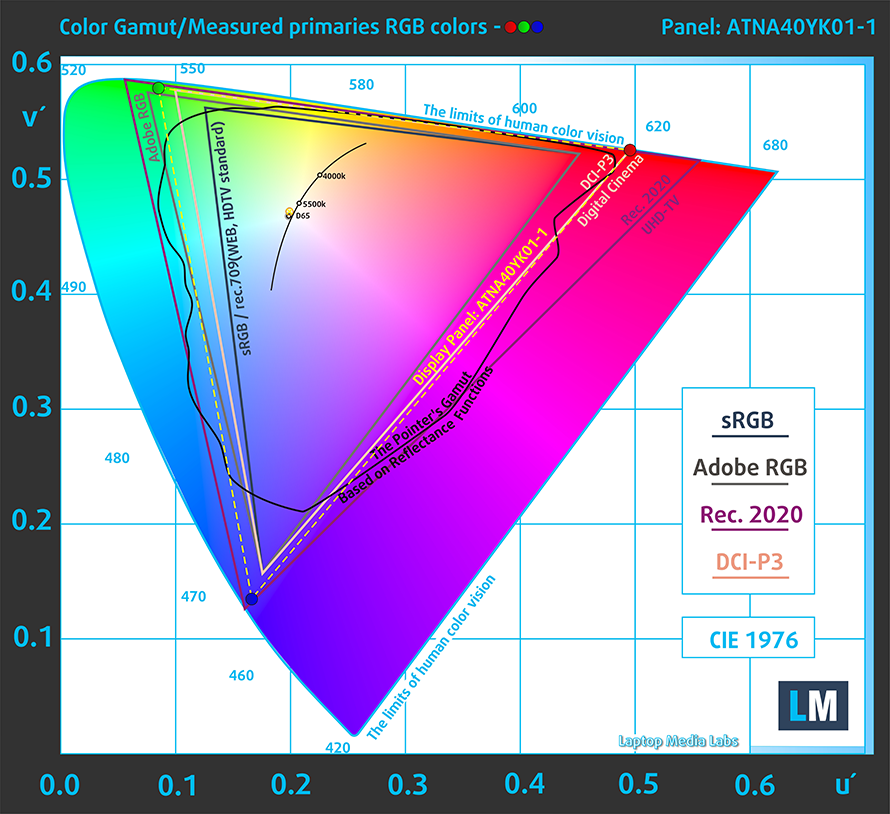
Enabling the HDR function emulates the sRGB color gamut.
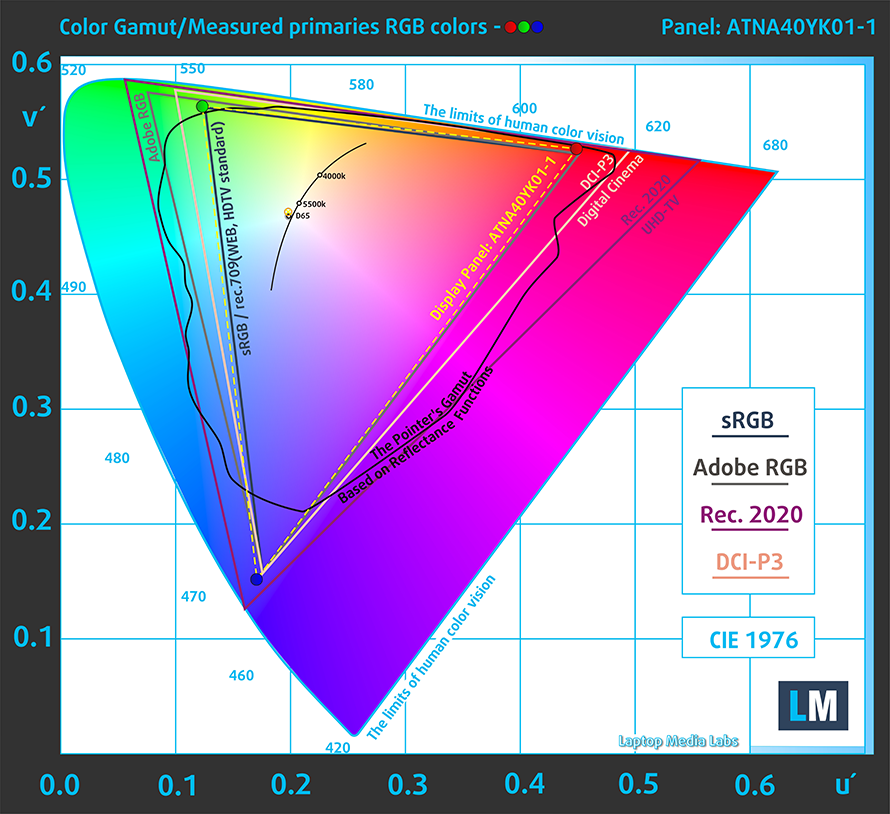
We tested the accuracy of the display with 24 commonly used colors like light and dark human skin, blue sky, green grass, orange, etc.
Below you can compare the scores of the Lenovo ThinkPad X1 Carbon 10th Gen against the P3-D65 standards (HDR off).
We also tested it in sRGB mode (HDR off).
The next figure shows how well the display is able to reproduce really dark parts of an image, which is essential when watching movies or playing games in low ambient light.
The left side of the image represents the display with stock settings, while the right one is with the “Gaming and Web Design” profile activated. On the horizontal axis, you will find the grayscale, and on the vertical axis – the luminance of the display. On the two graphs below you can easily check for yourself how your display handles the darkest nuances but keep in mind that this also depends on the settings of your current display, the calibration, the viewing angle, and the surrounding light conditions.
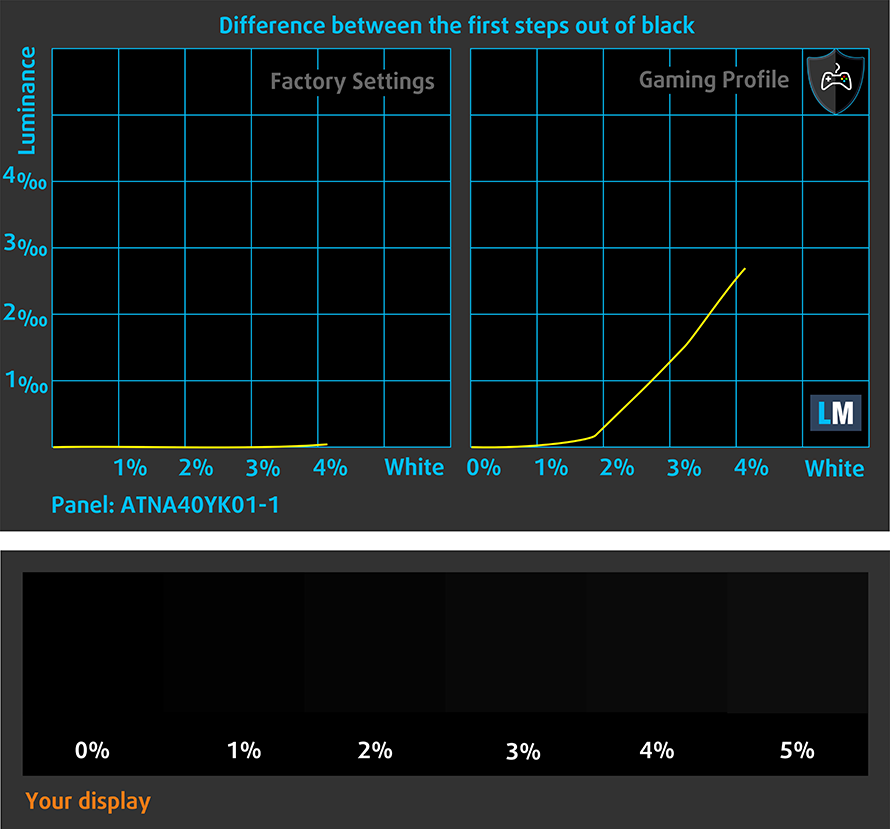
Response time (Gaming capabilities)
We test the reaction time of the pixels with the usual “black-to-white” and “white-to-black” method from 10% to 90% and vice versa.
We recorded Fall Time + Rise Time = 2 ms.
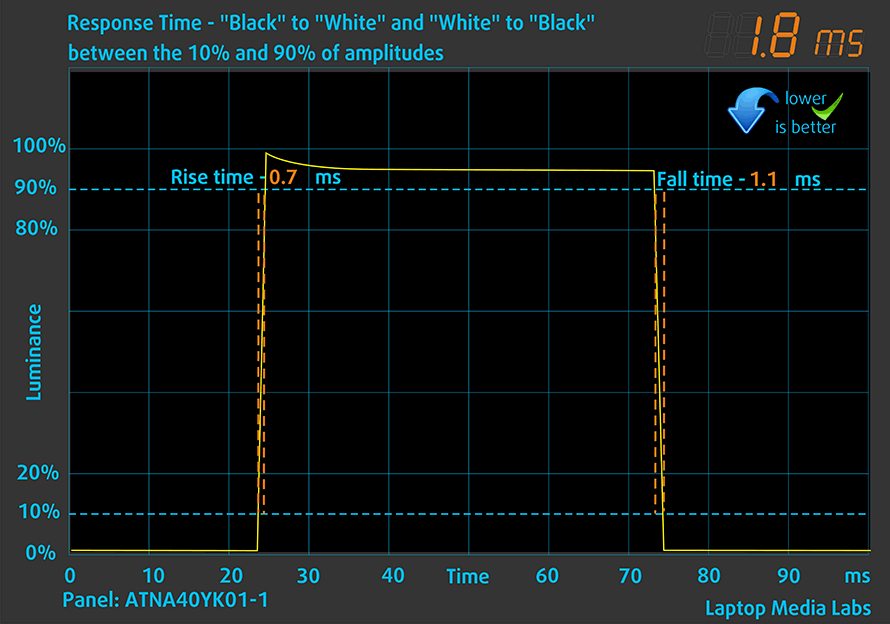
After that, we test the reaction time of the pixels with the usual “Gray-to-Gray” method from 50% White to 80% White and vice versa between 10% and 90% of the amplitude.

Health impact – PWM / Blue Light
PWM (Screen flickering)
Pulse-width modulation (PWM) is an easy way to control monitor brightness. When you lower the brightness, the light intensity is not lowered, but instead turned off and on by the electronics with a frequency indistinguishable to the human eye. In these light impulses, the light/no-light time ratio varies, while brightness remains unchanged, which is harmful to your eyes. You can read more about that in our dedicated article on PWM.
Unfortunately, Lenovo ThinkPad X1 Carbon 10th Gen’s panel uses low-frequency PWM for luminance adjustment up to 100 nits. Afterwards, we detected small pulsations, which makes the display generally safe in this aspect (after 100 nits).
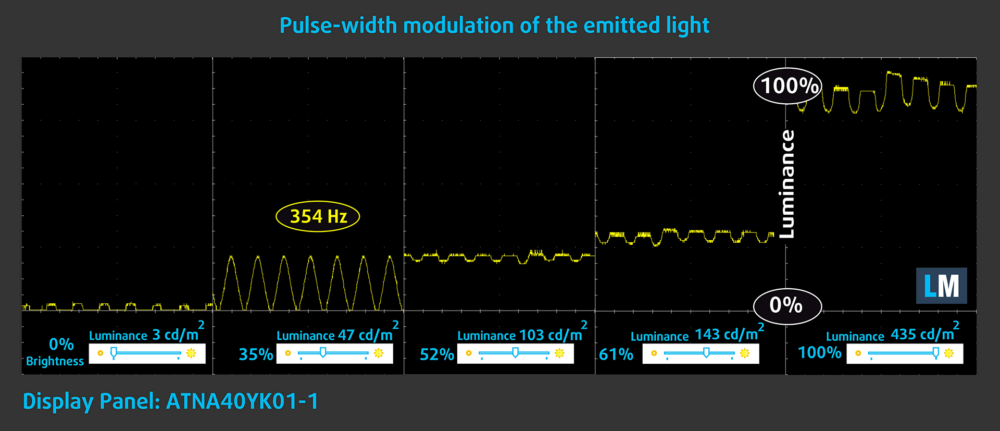
Blue light emissions
Installing our Health-Guard profile not only eliminates PWM but also reduces the harmful Blue Light emissions while keeping the colors of the screen perceptually accurate. If you’re not familiar with the Blue light, the TL;DR version is – emissions that negatively affect your eyes, skin, and your whole body. You can find more information about that in our dedicated article on Blue Light.
Gloss level measurement
Glossy-coated displays are sometimes inconvenient in high ambient light conditions. We show the level of reflection on the screen for the respective laptop when the display is turned off and the measurement angle is 60° (in this case, the result is 90.5 GU).
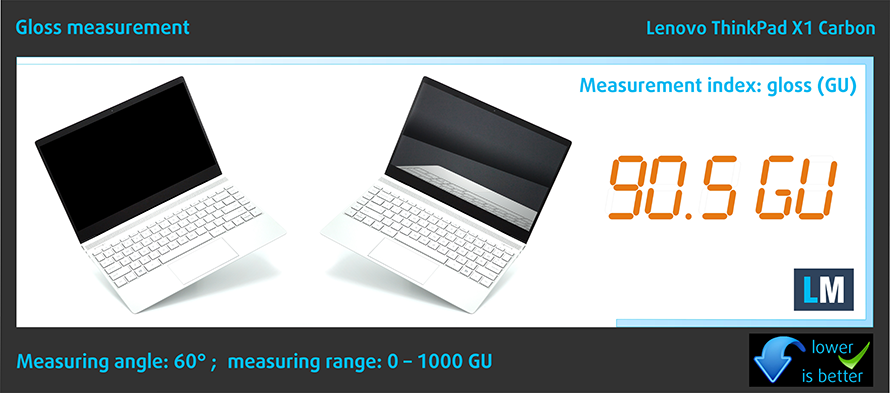
Buy our profiles
Since our profiles are tailored for each individual display model, this article and its respective profile package are meant for Lenovo ThinkPad X1 Carbon 10th Gen configurations with a 14.0″ Samsung ATNA40YK01-1 (2880 x 1800p) OLED panel.
*Should you have problems with downloading the purchased file, try using a different browser to open the link you’ll receive via e-mail. If the download target is a .php file instead of an archive, change the file extension to .zip or contact us at [email protected].
Read more about the profiles HERE.
In addition to receiving efficient and health-friendly profiles, by buying LaptopMedia's products you also support the development of our labs, where we test devices in order to produce the most objective reviews possible.

Office Work
Office Work should be used mostly by users who spend most of the time looking at pieces of text, tables or just surfing. This profile aims to deliver better distinctness and clarity by keeping a flat gamma curve (2.20), native color temperature and perceptually accurate colors.

Design and Gaming
This profile is aimed at designers who work with colors professionally, and for games and movies as well. Design and Gaming takes display panels to their limits, making them as accurate as possible in the sRGB IEC61966-2-1 standard for Web and HDTV, at white point D65.

Health-Guard
Health-Guard eliminates the harmful Pulse-Width Modulation (PWM) and reduces the negative Blue Light which affects our eyes and body. Since it’s custom tailored for every panel, it manages to keep the colors perceptually accurate. Health-Guard simulates paper so the pressure on the eyes is greatly reduced.
Get all 3 profiles with 33% discount
Sound
Lenovo ThinkPad X1 Carbon 10th Gen’s speakers produce a sound of very good quality. There is no deviation across the entire frequency spectrum.

Drivers
All drivers and utilities for this notebook can be found here: https://pcsupport.lenovo.com/us/en/products/laptops-and-netbooks/thinkpad-x-series-laptops/thinkpad-x1-carbon-10th-gen-type-21cb-21cc/downloads/driver-list
Battery
Now, we conduct the battery tests with the Windows Better performance setting turned on, screen brightness adjusted to 120 nits, and all other programs turned off except for the one we are testing the notebook with. Here, you get a 57Wh battery pack. It lasts for 7 hours and 45 minutes of Web browsing or 6 hours and 20 minutes of video playback.
In order to simulate real-life conditions, we used our own script for automatic web browsing through over 70 websites.
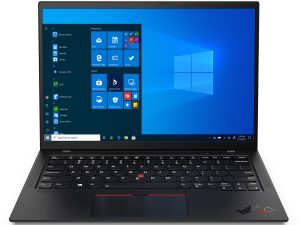
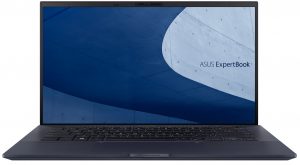

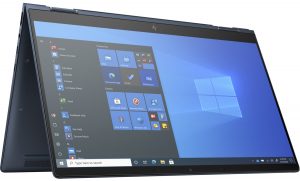
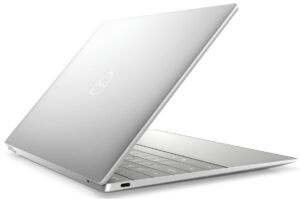
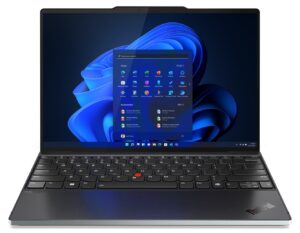
For every test like this, we use the same video in HD.






CPU options
You can pick this laptop with one of 5 million processors – Core i5-1235U, Core i5-1245U, Core i7-1255U, Core i7-1265U, Core i5-1240P, Core i5-1250P, Core i7-1260P, Core i7-1270P, and the Core i7-1280P.
Results are from the Cinebench R23 CPU test (the higher the score, the better)
Results are from our Photoshop benchmark test (the lower the score, the better)
GPU options
Graphics-wise you are “limited” to the integrated solution in your processor.
Results are from the 3DMark: Time Spy (Graphics) benchmark (higher the score, the better)
Results are from the 3DMark: Fire Strike (Graphics) benchmark (higher the score, the better)
Results are from the 3DMark: Wild Life benchmark (higher the score, the better)
Results are from the Unigine Superposition benchmark (higher the score, the better)
Gaming tests

| CS:GO | HD 1080p, Low (Check settings) | HD 1080p, Medium (Check settings) | HD 1080p, MAX (Check settings) |
|---|---|---|---|
| Average FPS | 132 fps | 84 fps | 58 fps |

| DOTA 2 | HD 1080p, Low (Check settings) | HD 1080p, Normal (Check settings) | HD 1080p, High (Check settings) |
|---|---|---|---|
| Average FPS | 141 fps | 93 fps | 59 fps |
Temperatures and comfort
Max CPU load
In this test we use 100% on the CPU cores, monitoring their frequencies and chip temperature. The first column shows a computer’s reaction to a short load (2-10 seconds), the second column simulates a serious task (between 15 and 30 seconds), and the third column is a good indicator of how good the laptop is for long loads such as video rendering.
Average P-core frequency; Average E-core frequency; CPU temp.; Package Power
| Intel Core i7-1270P (28W TDP) | 0:02 – 0:10 sec | 0:15 – 0:30 sec | 10:00 – 15:00 min |
|---|---|---|---|
| Lenovo ThinkPad X1 Carbon 10th Gen | 1.46 GHz @ 1.37 GHz @ 65°C @ 24W | 2.23 GHz @ 1.87 GHz @ 88°C @ 34W | 1.59 GHz @ 1.29 GHz @ 76°C @ 20W |
| Lenovo ThinkPad X1 Yoga Gen 7 | 2.82 GHz @ 2.31 GHz @ 88°C @ 46W | 1.59 GHz @ 1.19 GHz @ 77°C @ 19W | 1.59 GHz @ 1.20 GHz @ 79°C @ 19W |
Something you won’t be able to see on the table above is the steep drop in the frequency after about 5-6 seconds of the full load. Before this happened, the frequency of the P-cores was a bit less than 3.00 GHz, while the power draw was about 51W. After that, everything settled for a rather low result, similar to the ThinkPad X1 Yoga Gen 7.
Comfort during full load
The thin and light chassis of this device didn’t do a great job of isolating the heat inside, as some of it is transferred to the WASD area of the keyboard. On the bright side, the noise comfort is pretty fine.

Verdict
 You see, the ThinkPad X1 Carbon has always attracted people with its super high quality. It is something like the Mercedes Benz of business laptops. Why? Because it has always excelled with premium materials and stood as a symbol in society. Not to mention that developers absolutely loved it.
You see, the ThinkPad X1 Carbon has always attracted people with its super high quality. It is something like the Mercedes Benz of business laptops. Why? Because it has always excelled with premium materials and stood as a symbol in society. Not to mention that developers absolutely loved it.
However, there are some things we didn’t particularly love. First – no memory upgrade options. Of course, this isn’t something new, and we should have already gotten used to it. But then comes the performance. This device is offered with 15W and 28W chips, and we can definitely say that the 28W ones are not working really efficiently, as the Core i7-1270P settled for a 20W power target not long after we started the stress test.
On the bright side, the port selection features two Thunderbolt 4 connectors, an HDMI port, two USB Type-As, and a SIM card tray. The latter offers an optional 5G connectivity, but for that, your WWAN card must be the Fibocom FM350-GL or other compatible with this functionality.
Lenovo ThinkPad X1 Carbon 10th Gen’s OLED panel has a 2880x1800p resolution, comfortable viewing angles, and a practically infinite contrast ratio. This makes the blacks really pop. What is also popping are the colors – this display can fully reproduce the entire sRGB and DCI-P3 color gamuts. As a result, you get a very attractive image. In addition to that, the super-fast pixel response time ensures a smooth visual experience.
The only area this display is lackluster is the battery life. Its high resolution (and probably the nature of the panel too) has a negative impact, as we see Web browsing times of nearly 8 hours, and video playback of 6 hours and 20 minutes. Yes, this is not bad, but for a high-profile business machine, we would have wanted more. You can probably achieve more if you abide by the OLED rules of a dark theme and stay away from all-white backgrounds.
Another thing we would have liked would be memory upgrade options. No SODIMM slots mean that the memory is soldered to the motherboard. Thankfully, Lenovo sells configurations with up to 32GB of LPDDR5 RAM, working at 5200 MHz.
So, feature-wise, the laptop is nothing short of what we expected. However, it is time for Lenovo to bring out the big guns in terms of cooling – as it did with the Legion 7 (16″, 2022). Otherwise, its ThinkPad X1 Carbon will be swallowed by the competition with only laptop clamshell fossils remaining for the next generations.
You can check the prices and configurations in our Specs System: https://laptopmedia.com/series/lenovo-thinkpad-x1-carbon-10th-gen-2022/
Pros
- Great input devices
- Full DCI-P3 coverage and accurate color representation with our profile (Samsung ATNA40YK01-1)
- High maximum brightness and 16:10 aspect ratio (Samsung ATNA40YK01-1)
- Supports PCIe x4 Gen 4 drives
- Two Thunderbolt 4 connectors (both can be used for charging)
- Wi-Fi 6 support plus optional IR face recognition, fingerprint reader, and 5G support
- Quad-channel memory
Cons
- Lacks an SD card reader
- Memory is soldered to the motherboard
- Not great power management
